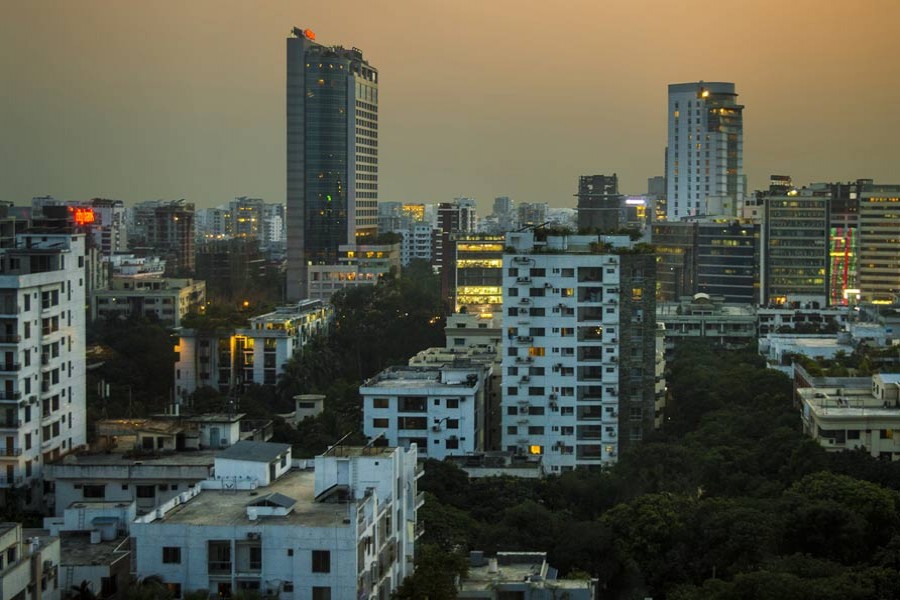The low-income segment of the capital city's population fared worse last year than it did in the previous three years. With slight variation, the same is likely to be true for the 120 million living in other cities, towns and villages. The reason is quite simple, they have to make do with $2.0 or less they earn daily. Evident here is a gross economic disparity -- one that is, however, not unique to this country. When the top one per cent people in the world owns more than half of the total wealth recording a 6.0 per cent growth to $280 trillion in 2017, the weakness of the global economic systems is exposed. Observing this lop-sided wealth creation, the Credit Swisse report further indicates that today's 36 million millionaires are expected to do even better in the coming years and their number is expected to grow to 44 million by 2022.
What, though, remains unsaid is that the poor will not be able to improve their income and move up the socio-economic ladder at the same rate across the world. Bangladesh has been registering an economic growth rate of 7.0 per cent over the past few years and even the percentage of hardcore poor has also declined significantly. But against an average national income of more than $1,600, the $2.0 or less an income a day looks outrageously incongruous. Concerns have been voiced by financial experts over the rising economic disparities in this country but no socio-economic programmes have been suggested, let alone taken up for implementation, to reverse the course of unrelenting economic disparity.
The Consumer Association of Bangladesh (CAB) has concentrated on the poor section of the capital's inhabitants in order to highlight their plight. They are supposed to be worse off in time of any price hike of commodities. Lacking in supports villagers can count on in times of such crises, urban poor and low-income groups are subjected to income erosion. Unlike villagers they cannot collect fuel, vegetables and fish from open sources and have to purchase commodities and services from market or service providers. On that count, they are certainly more at a disadvantage than the rural poor.
Yet there are a few common things, the price hikes of which hit them equally hard. Staple rice, essentials like vegetables, fish, onion etcetera were costlier in 2017 than before. Particularly, the higher price of coarse varieties of the staple had a telling impact on the poor and low-income people for they spend bulk of their income on rice and wheat. In the informal sector, unskilled or semi-skilled labourers, moreover, cannot expect to have a steady income because sometimes they find themselves out of employment for several reasons -illness included. Savings are a rare thing for poor families to fall back upon during lay-off.
According to the CAB, living cost of the Dhakaites went up by 8.44 over the previous year's level. There is no mention if the income of the workers in the informal sector also recorded any rise. Most likely this did not happen. With the government employees enjoying a salary rise double their previous slab, there was little repercussion. The poor and private fixed income earners had to silently bear the brunt of price hike. Many families had to forego a few things in order to readjust to the situation.
The CAB did not take into reckoning the expenditure on children's education and healthcare. Surely, people of lower middle class have to spend a disproportionately high amount on children's education. Medical treatment too is very costly here. Many families, irrespective of urban or rural, become pauper if one of the members requires treatment for complicated or serious illness. Why Cuba went for free medical service for its people should act as a lesson for countries around the world.
Comparatively, labourers in villages are a little better off because there is great demand for labour. But then the higher demand is seasonal. During off-season there is a slump in agricultural and other works. Rural landless people are prone to migrating to cities and towns but if the family is large with a number of children, they cannot move to any urban centre looking for employment. They are the worst off. Extreme poverty does not allow such families to send their children to schools. Illiteracy and inherited ill health spell a generational doom on them.
Clearly, wealth distribution is closely linked to education and skill. Creation of opportunities for the person down the rank should be the prime objective of future development programmes. Concentration of wealth in a few hands has its own backlash at a certain point of time. Mercifully, the world's richest persons like Bill Gates and Warren Buffet have seen virtues in putting their wealth in the service of the needy all across the world. But not the richest in other countries have acquired the same knowledge; instead they aspire to expand their business empire by means fair or foul to challenge those at the top of the list of the world's richest.
Governance and economy are in a mismatch now throughout the world. The multinational companies dictate terms and the few international financial institutions promote their cause. Developing countries like Bangladesh follow an economic system prescribed for them unaware that it is yawning the gap between the rich and the poor. Rational and equitable distribution of wealth among the people under such a system is impossible.


